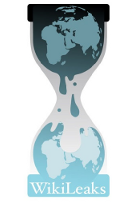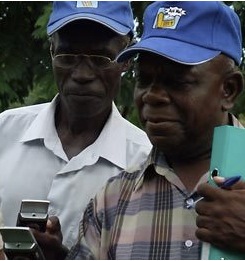An 11-year-old Ghanaian schoolboy is spearheading a campaign in support of Somalis after seeing footage of people walking in search for food.
With an ambitious target of $13 million, Andrew Andasi has raised over $4000 for victims of the famine in the Horn of Africa as of August, and is joining the ranks of celebrities such as Lady Gaga, Justin Beiber and Rihanna by using social media to advocate for famine relief. This ability to instantly transmit images and videos on issues as they happen could have a unique impact on disaster response and humanitarian assistance.
Social media (SM), which embodies the emerging online relational tools, methodologies, and applications that allow groups of people to interact with one another by exchanging content, opinion, and insight, continues to have significant impact on awareness creation and dissemination of information in times of emergency. The on-going humanitarian crisis at the Horn of Africa is a testament to how SM could be of immense help in times of disaster.
In addition to the immediacy of SM to responses, the new technologies and applications have shifted power from the hands of the few to the masses. SM has proven to better facilitate two-way communication than the traditional media, and also ensures richer interaction between and among people. It is relatively inexpensive and easily accessible with minimum investment of resources. SM also by their nature, are very decentralized and less hierarchical thereby providing scale and high capability of reaching a global audience. It requires minimal training, skills and expertise to use.
How is SM being used Differently in this Crisis?
Unlike earthquakes, tsunamis, and tornadoes, famine has a strong human component. Famines happen when countries and regions are not equipped to deal with extremes in weather. Notwithstanding, there have been a number of criticisms with the limited use of SM at the Horn of Africa for awareness creation and fundraising in support of the victims compared to other disasters such as the Haiti earthquake, and Japan tsunami. Examination of the use of SM at the Horn of Africa shows that these applications are progressive rather than instantaneous. Instead of a surge in the number of tweets and SMS messages as seen in natural disasters, there have been proliferation of Facebook groups such as Somalis without Borders for Drought Relief, and Africans Act 4 Africa among others. While several theories have emerged to explain the slow response – the volatile political situation in Somalia; the US debt ceiling; the mobile phone hacking scandals by the News of the World in Britain; and the killings in Norway, it is also important to understand the nature of the disaster – being progressive rather than instantaneous.
Time for Action
In July, the United Nations (UN) officially declared a famine in two regions of southern Somalia and this has extended to five regions in August. Over ten million people across the Eastern Horn of Africa are now suffering from one of the worst food crisis the world has seen in decades – United Nations World Food Program (WFP).
But the time now is for action – emergency rather than accusation. “We need the contributions of caring individuals here in the United States and around the world…we have seen this in previous crises, from the Indian Ocean tsunami in 2004 to the earthquake in Haiti; individual donations can have a tremendous impact” Said the US Secretary of State. This is why we need the power of social media. The active utilization of the new ICTs and SM for disaster response continues to improve over the years. Celebrities across the world are tapping into the magic of SM to garner support for innocent women and children. For the past few months, several news headlines have appeared showing how SM is reaching out to the public about the problem and also soliciting support for the people.
Simply capturing and transmitting images and videos that other people have posted could have a significant impact on ordinary citizens like Andrew Andasi to take action – that is the potential power of SM.












































